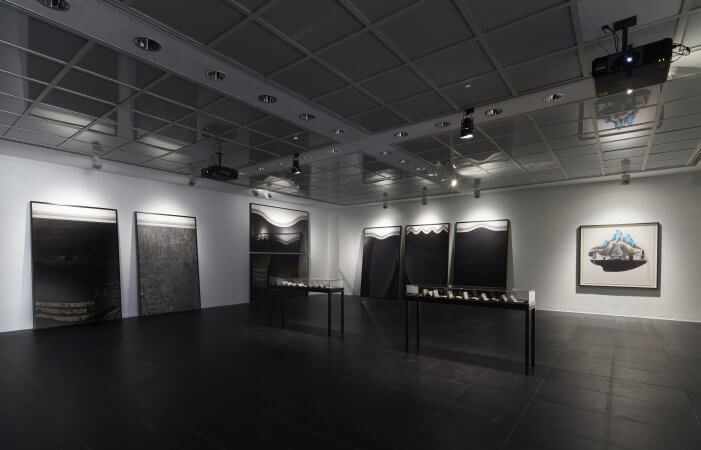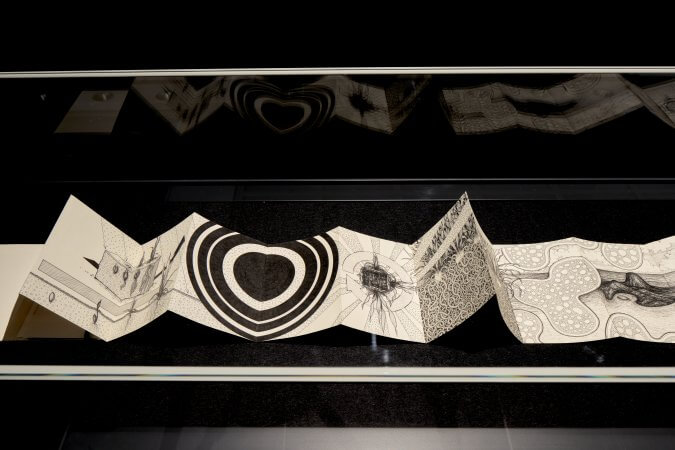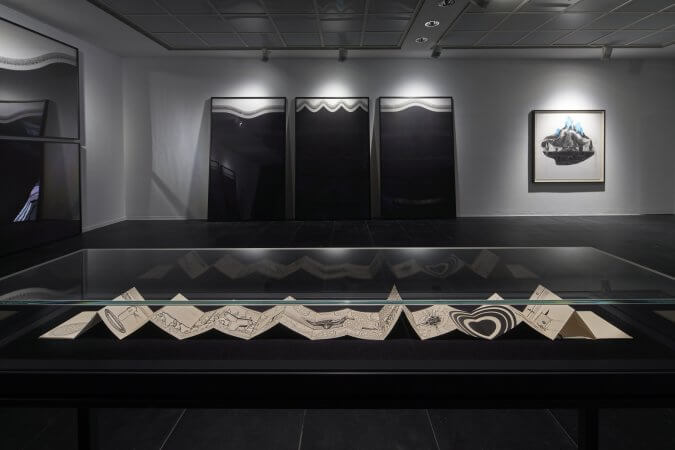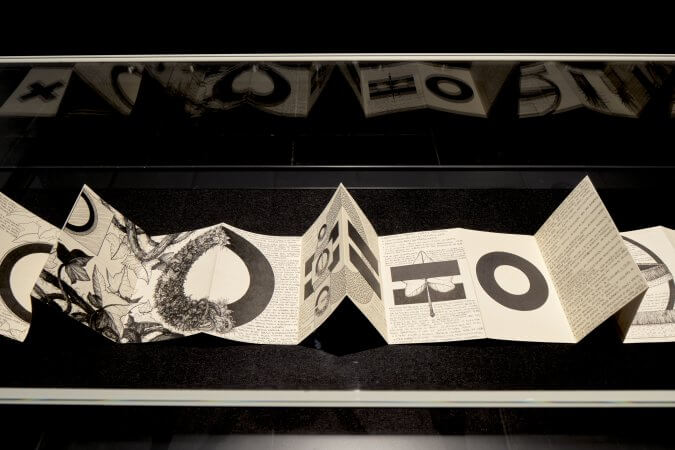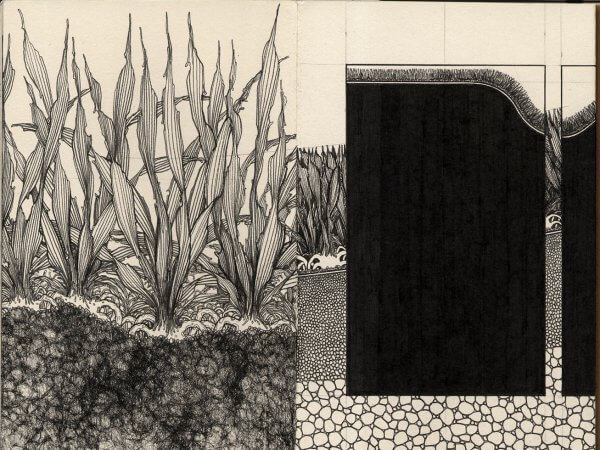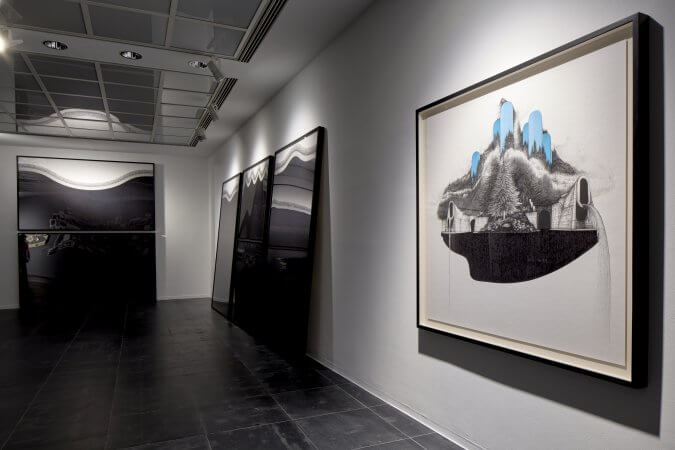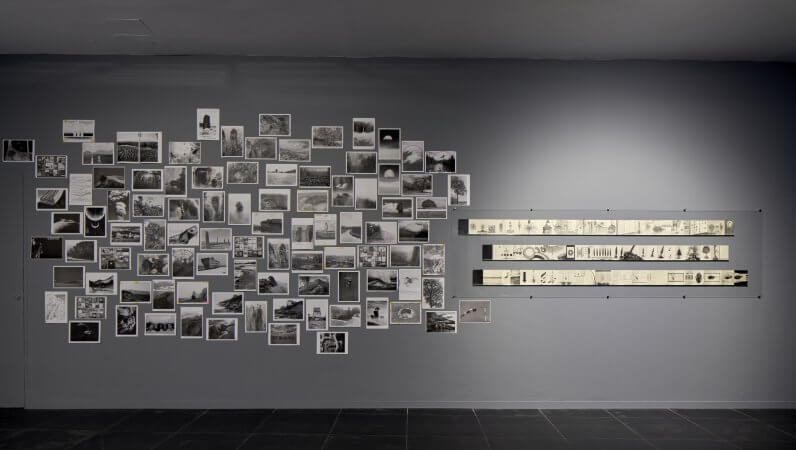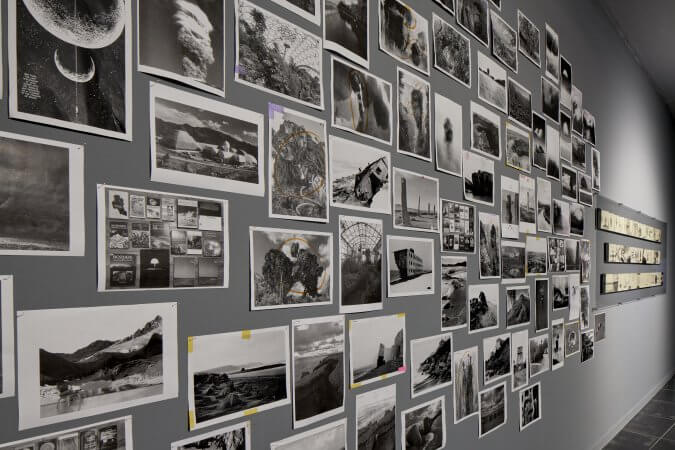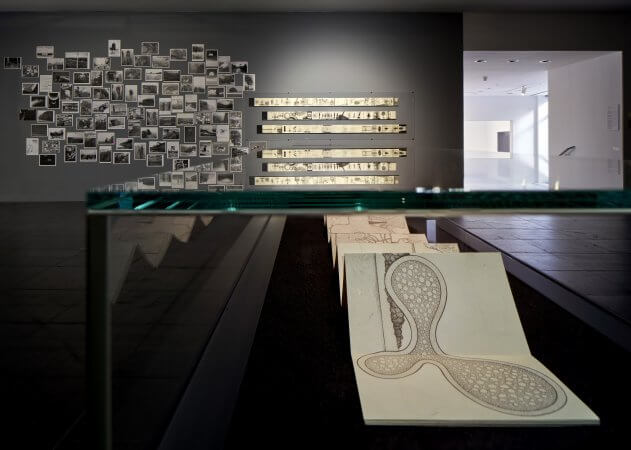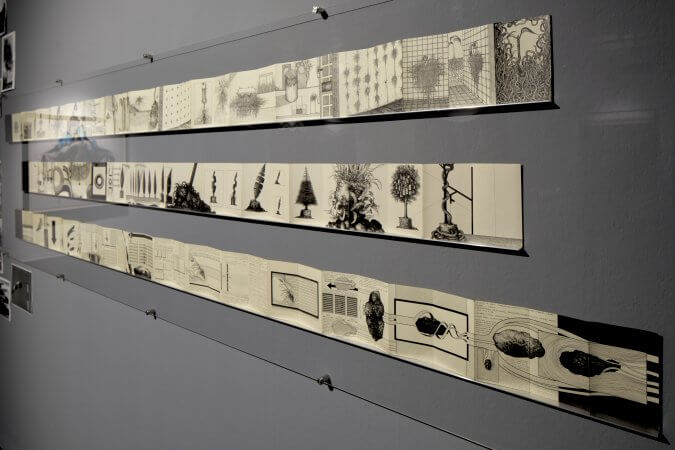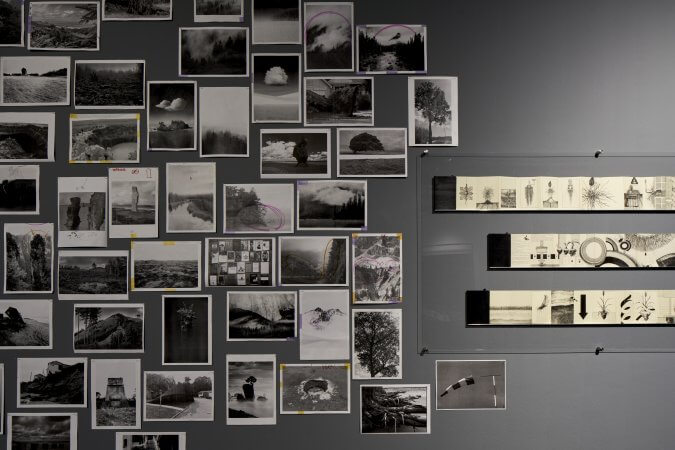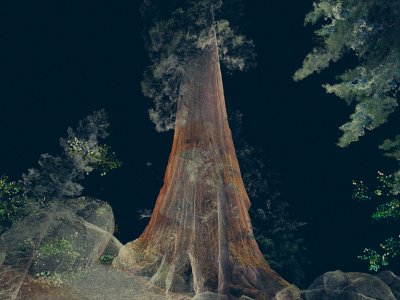Nicola Toffolini
Sezione B#01, 2013
Drawings with Copic Multiliner SP 0.03, 0.05, 0.1, 0.2, 0.25, 0.3, 0.35, 0.5, 0.7 black pens, Copic Marker, Copic Wide, Copic Sketch colors 100 Black and 110 Special Black on Fabriano Accademia Drawing Paper 200gsm
250 x 150 cm
Sezione A#01, 2013
Drawing with Copic Multiliner SP 0.03, 0.05, 0.1, 0.2, 0.25, 0.3, 0.35, 0.5, 0.7 black pens on Fabriano Accademia Drawing Paper 200gsm
250 x 150 cm
Sezione Doppia B#01, 2020
Drawing with Copic Multiliner SP 0.03, 0.05, 0.1, 0.2, 0.25, 0.3, 0.35, 0.5, 0.7 black pens, Copic Marker, Copic Wide, Copic Sketch colors 100 Black and 110 Spezial Black on Fabriano Accademia Drawing Paper 200gsm
300 x 260 cm (2 pieces)
Sezione B#03, 2020
Sezione B#04, 2020
Sezione B#02, 2020
Drawings with Copic Multiliner SP 0.03, 0.05, 0.1, 0.2, 0.25, 0.3, 0.35, 0.5, 0.7 black pens, Copic Marker, Copic Wide, Copic Sketch colors 100 Black and 110 Special Black on Fabriano Accademia Drawing Paper 200gsm
250 x 150 cm
Courtesy the artist and Galleria D406 disegno contemporaneo, Modena
Pòst #01, 2020
Drawing with Molotow Blackliner 0.05, 0.1, 0.2, 0.3, 0.4, 0.5, 0.7, 0.9 and 1.0 mm black pens, Liquitex Acrylic Gouache on Fabriano Artistico Drawing Paper 640 gsm
140 x 140 cm
(on the wall)
Studi erosioni (gessi), 1999 – 2000
Parassiti, 2011 – 2012
CX, 2013 – 2016
(in the showcases)
Ciambelle, 2013 – 2015
Architetture utopiche, 2019 – fortlaufend
Drawings with Sakura Pigma Micron 005, 01, 02, 03, 05, 08 and brush black pens on Moleskine Japanese Pocket Album
9 x 279 x 1 cm; closed 9 x 14 x 1 cm
Courtesy the artist
Nicola Toffolini has been studying texts on botany, philosophy of science, science fiction and Renaissance prints for two decades. Toffolini transforms his research and knowledge into the medium of drawing and multimedia objects.
At the Frankfurter Kunstverein, the selection of works focuses on his graphic oeuvre in the form of the overall installation, which consists of eight drawing panels. At the very edge of the picture, the grass sward with the first layers of soil can still be seen, drawn in a reduced naturalistic style. But his central pictorial motif is the space that eludes the human eye, below the surface of the earth. With the finest ink pens and black copymarkers, Toffolini draws plants and soil cross-sections with the precision of a botanist or technician. The stylised mappings not only depict a controlled nature, but they also have inscribed in them the temporal dimension of the manual drawing process.
The panels correspond to the size of a human body. The initially blank paper surface is altered by the artist with utensils used by technical draughtsmen for few and precise lines. Toffolini, on the other hand, covers square meters of surface with an almost obsessive execution of thin strokes until the space is completely filled or blackened.
This practice reminds of the art form of calligraphy, which sharpens one’s own perception and method of movement in meticulous preparation, as a physical acting out of controlled placed gestures in search of inner peace.
Drawing thus becomes a physical act of thought and introspection, a bodily translation of thought, a physical act that focuses the mind in a concentrated direction.
On the one hand formally structured and consistent beyond measure, and on the other free in his association, Toffolini no longer adheres to the rules of real conditions, but deconstructs and recombines until imagined systems emerge. The pictorial worlds are composed of natural elements and technical structures. The control Toffolini exercises over his motifs reflects human intervention in the landscape. He constructs artificial worlds that seem uncanny in their manipulation.
Toffolini has always carried out his thinking processes in the intimate format of the foldable notebook. Five of them are on display in the exhibition. His drawing books are studies of individual botanical, geological or physical phenomena, which he transforms from a scientific knowledge into a pictorial abstraction. The result is a collection of thoughts, fragments of knowledge and pictorial thinking on topics such as ecological systems, climatic changes and human-induced natural disasters, which revolve around the tense relationship between human culture and nature.
As a contemporary artist, he is a witness to the flood of images in the media reporting on climatic phenomena, ecological catastrophes and the ever-increasing destruction of nature, and he processes them by trying to organise the images as material. In a private archive, Toffolini collects large quantities of image references, newspaper articles, literature, scientific texts and historical engravings by Italian scholars, which he has collected in a personal atlas. From these, his motifs emerge as the essence of a long process of image-finding, which he then merges into surreal pictorial constellations. This research and process serves him as a study for his works, in which he allows individual elements, connected with knowledge of ecological principles, to become independent visual worlds. Nicola Toffolini creates oversized drawings reminiscent of historical copperplate engravings, but instead of miniaturising the image, he does not seek to compress a whole world into a tiny space; on the contrary, he directs the viewer’s attention to the details and amplifies them through size.
At first glance, Toffolini’s works seem as precise and objective as today’s high-resolution image-generating processes digitally scan every natural soil stratification and every living thing in search of patterns and facts. But in his relentlessly perfect drawings, we see a world that is no longer animated at its core, but disintegrates into fragments.
Nicola Toffolini (*1975 in Udine, IT) is an artist, performer and designer who lives and works in Florence (IT) and Coseano (IT). He completed his artistic training in painting at the Academy of Fine Arts in Venice (IT). He creates sculptures, installations and drawings. Toffolini was awarded the prestigious grant of the American Pollock-Krasner Grant Foundation (US), established in honour of the artistic legacy of Lee Krasner and Jackson Pollock. Together with artist Eva Geatti, he is the founder of the experimental cross-disciplinary theatre company Cosmesi (2003) and the design studio Cickine (2017) in the field of design. He exhibited also in collective shows and fairs such as: ArteFiera, Bologna (IT), Loft Project, Saint Petersburg (RU); Artissima and Parco Arte Vivente, Turin (IT); Expo Shanghai und Shanghai Urban Planning Exhibition Center, Shanghai (CN), Palazzo Re Enzo and Pinacoteca, Bologna (IT), Isola di Sant’Erasmo, Venice (IT), Palazzo Strozzi, Florence (IT), Brown Project Space, Milan (IT), Istituto Italiano di Cultura, Madrid (ES), Orto Botanico, Palermo and Parma (IT), Fondazione Bevilacqua La Masa, Venice (IT), Schusev Museum of Architecture, Moscow (RU), Museo della Scienza e della Tecnologia Leonardo da Vinci, Mailand (IT).

